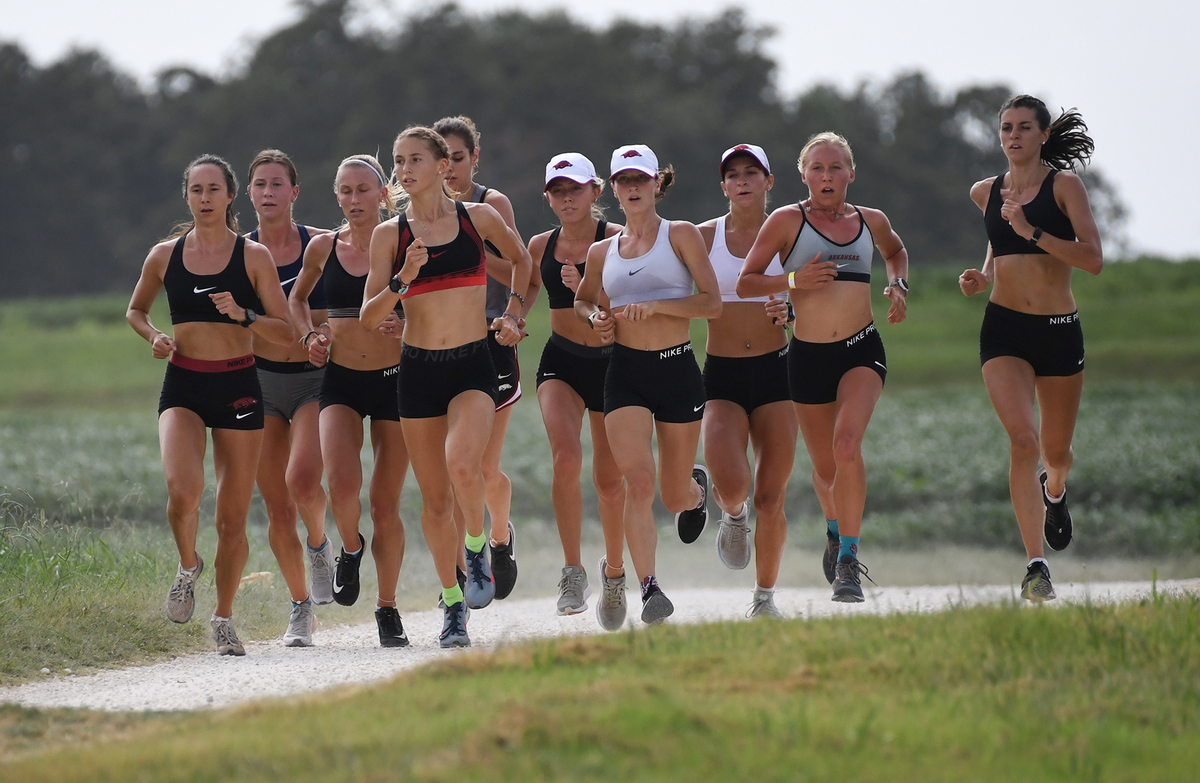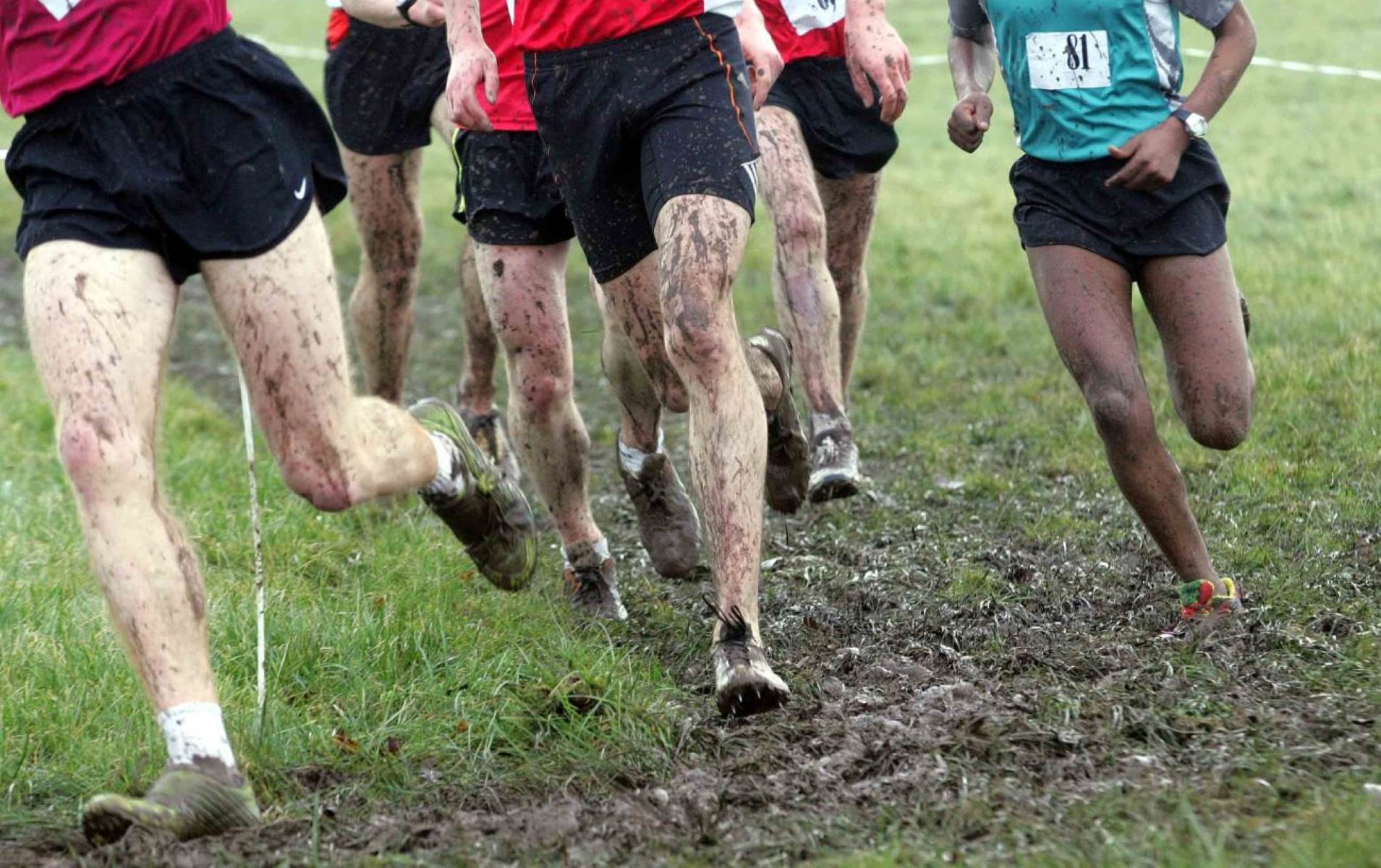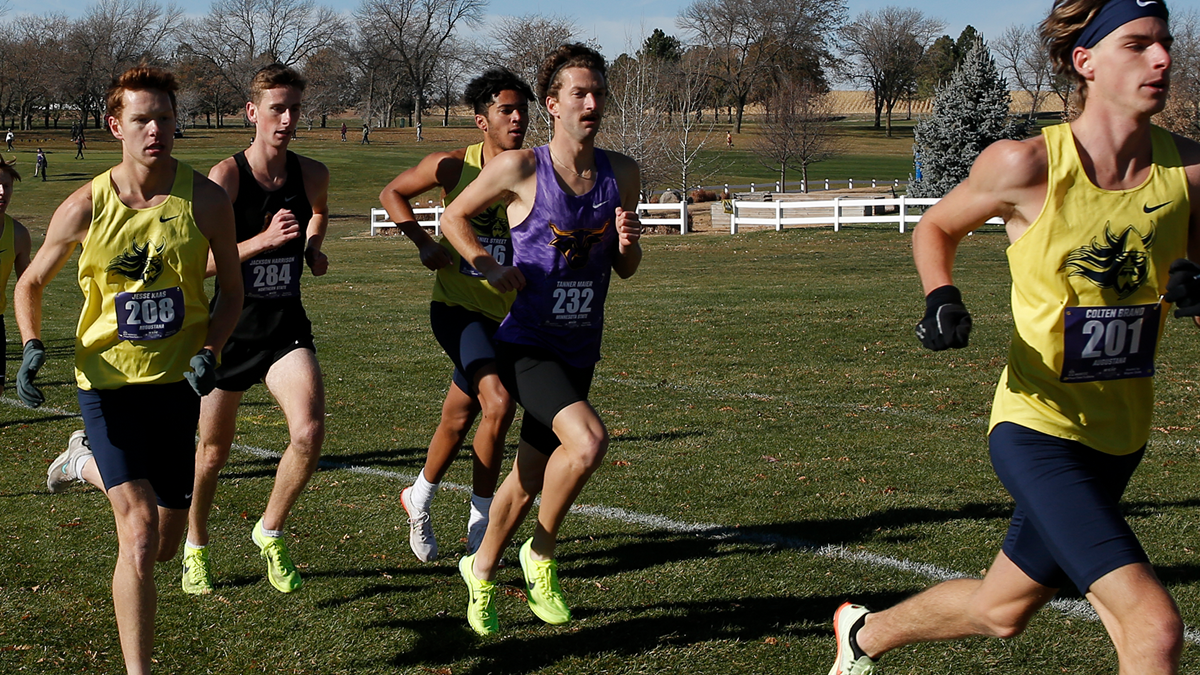

Featured
How Long Do Cross Country Runners Run
Modified: August 21, 2023
Discover how long cross country runners run and learn about the endurance and perseverance required for this featured sport.
Introduction
Cross country running is a challenging and exhilarating sport that pushes athletes to their limits. It is a form of long-distance running that takes place on various terrains, including trails, grass, and hills. Unlike track and field, cross country running involves racing in a natural environment, making it a unique and demanding discipline.
For those unfamiliar with cross country running, it may seem like a simple sport of running through fields and forests. However, it requires a combination of endurance, speed, and mental toughness to succeed. Cross country races can range from 5 kilometers to 10 kilometers or more, depending on the age group and competition level. Runners must navigate through different types of terrain and overcome various obstacles along the way.
Measuring the duration of a cross country run can vary depending on multiple factors, including the runner’s skill level, course difficulty, and training program. In this article, we will delve into the different methods of measurement used in cross country running, explore the average distances for cross country runners, discuss training programs, highlight factors that affect running duration, examine the benefits of long-distance running, and provide tips for improving endurance in cross country running.
Whether you are a beginner interested in joining your school’s cross country team or an experienced runner looking to take your training to the next level, this article is designed to provide you with valuable insights and guidance. So, lace up your running shoes and get ready to dive into the exciting world of cross country running!
Methods of Measurement
When it comes to measuring the duration of cross country runs, there are various methods that can be used. These methods provide insights into the distance covered and the time taken by the runners. Let’s explore some of the common methods of measurement:
- GPS Tracking: With the advancement of technology, GPS devices and running apps have become popular tools for measuring distances in cross country running. These devices use satellite signals to accurately track the runner’s route and calculate the distance covered. They also provide real-time data such as pace, speed, and elevation, allowing runners to monitor their performance during training or races.
- Course Markings: In organized cross country events, course markings play a crucial role in measuring the distance. The course is marked with flags, cones, or painted lines on the ground, indicating the route that runners need to follow. The course distance is predetermined and measured with precision beforehand to ensure accurate race distances.
- Lap Counting: In some cross country races, especially those held on a track or a looped course, lap counting is used to measure the distance. Officials stationed at the start/finish line record the number of laps completed by each runner. By multiplying the number of laps by the distance of one lap, the total distance covered can be determined.
- Pedometer: Pedometers are small devices that count the number of steps taken by a runner. By multiplying the total number of steps by the average stride length, the distance covered can be estimated. However, this method may not be as accurate as GPS tracking or course markings, as stride lengths can vary between individuals.
- Timing Mats: Timing mats are often used in races to measure the time it takes for a runner to cross certain checkpoints. These mats are placed at specific intervals along the course, and runners’ timing chips or bibs are detected as they pass over the mats. By subtracting the time recorded at the start from the time recorded at the finish, the total duration of the run can be calculated.
It is important to note that different methods of measurement may have slight variations in accuracy. GPS tracking and course markings are generally considered the most reliable methods for determining the distance covered in cross country runs. The accuracy and precision of the measurement method can impact training programs, race strategies, and overall performance evaluation for cross country runners.
Average Distances for Cross Country Runners
The distances covered by cross country runners can vary depending on factors such as age group, gender, competition level, and race category. Let’s explore the average distances typically encountered in cross country running:
- High School: In high school cross country, the standard race distance for boys is typically 5 kilometers (or 3.1 miles). This distance allows athletes to test their endurance and speed on a challenging course. For girls, the average race distance is also 5 kilometers, although some states may have different regulations or offer alternative distance options.
- College and University: In collegiate cross country, the race distances can vary depending on the level of competition. Male athletes typically cover distances of 8 kilometers (or 4.97 miles) or 10 kilometers (or 6.21 miles) in championship races. Female athletes usually compete in races covering distances of 5 kilometers or 6 kilometers (or 3.1 to 3.73 miles).
- Adult and Masters: Adult and masters cross country races also have varied distances. In some local or regional races, both men and women may compete in 5-kilometer runs. Longer distances, such as 8 kilometers or 10 kilometers, are also common for adult and masters races, providing a greater challenge for experienced runners.
- International Competitions: In international competitions, such as the World Cross Country Championships, the race distances are typically longer. For senior men, the race distance is usually 12 kilometers (or 7.46 miles), while for senior women, it is often 8 kilometers (or 4.97 miles). These longer distances test the endurance and strength of the world’s top cross country runners.
It is important to note that these distances are just averages and can vary depending on the specific race and governing body. The variety in race distances allows cross country runners to compete at different levels of challenge, accommodating runners of varying abilities and experience.
Understanding the average distances involved in cross country running can help athletes set goals, plan their training programs, and develop effective strategies for their races. Whether it’s a high school competition or an international event, the distances encountered in cross country running provide an exciting and demanding test for runners of all levels.
Training Programs for Cross Country Runners
To excel in cross country running, athletes need to follow a well-designed training program that focuses on building endurance, speed, strength, and mental resilience. A structured training plan can help runners improve their performance and prepare for the challenges of cross country races. Here are some key elements to consider when creating a training program for cross country runners:
- Base Mileage: A solid foundation of aerobic endurance is essential for cross country runners. Building up a base mileage involves gradually increasing the weekly running distance over several weeks or months. This helps to develop the cardiovascular system, improve stamina, and prevent injury. The base mileage phase typically consists of easy-paced runs at a conversational pace.
- Long Runs: Long runs are a vital component of cross country training as they help build endurance and mental toughness. These runs are typically done once a week and involve covering longer distances at a steady, comfortable pace. Long runs simulate the demands of cross country races and prepare the body to handle sustained effort over extended periods.
- Tempo Runs: Tempo runs are workouts performed at a comfortably hard pace, just below a runner’s anaerobic threshold. These runs improve lactate threshold, enhance speed endurance, and increase the body’s ability to sustain a faster pace for a longer duration. Tempo runs are usually shorter in distance compared to long runs but are run at a faster pace.
- Hill Training: Cross country courses often feature challenging terrain with hills. Incorporating hill training into the program helps runners develop leg and core strength, improve power, and enhance running form. Hill repeats, where runners sprint uphill and recover downhill, are a common hill training workout used to simulate race conditions and improve speed on inclines.
- Interval Training: Interval training involves running at a fast pace for a set distance or time, followed by a period of recovery. This type of training improves speed, anaerobic capacity, and race-specific fitness. Interval workouts typically consist of shorter, intense efforts with longer recovery periods to allow for the replenishment of energy stores.
- Rest and Recovery: Adequate rest and recovery are crucial components of a training program. Rest days allow the body to repair and adapt to the stresses of training, reducing the risk of overuse injuries. It is important to schedule recovery days, where runners engage in light activities or rest completely, to avoid burnout and optimize performance.
It is important to tailor the training program to individual abilities, goals, and fitness levels. Gradual progression, listening to the body, and seeking guidance from a qualified coach or trainer can help ensure that the training program is safe, effective, and sustainable.
Remember, consistency and patience are key when following a cross country training program. By incorporating a variety of workouts, addressing weaknesses, and maintaining a balanced approach to training, runners can maximize their potential and excel in the challenging and exhilarating sport of cross country running.
Factors Affecting Running Duration
When it comes to cross country running, the duration of a run can vary greatly depending on several factors. These factors can influence the speed, endurance, and overall performance of a runner. Let’s explore some key factors that can affect running duration in cross country:
- Physical Fitness: The level of physical fitness plays a significant role in determining running duration. Athletes who have trained consistently and have a higher fitness level will typically be able to sustain a faster pace for a longer duration. Factors such as cardiovascular endurance, muscular strength, and flexibility all contribute to overall fitness levels and impact running duration.
- Terrain: The terrain on which the cross country run takes place can greatly affect running duration. Races that involve hilly or rugged terrain may slow down runners as they navigate uphill climbs or challenging descents. On the other hand, flat or smoother terrains can allow for faster running speeds and potentially shorter running durations.
- Weather Conditions: Weather conditions can also impact running duration. Running in extreme heat or cold can be physically demanding and affect overall performance. Additionally, factors such as wind, humidity, and precipitation can pose additional challenges and impact running duration. It is important for runners to adapt their pace and strategies based on the prevailing weather conditions.
- Mental Toughness: The mental aspect of cross country running is crucial. Mental toughness plays a significant role in running duration. Grit, determination, and the ability to push through physical fatigue can influence a runner’s pace and their ability to maintain it. Mental strategies such as positive self-talk, visualization, and focus can contribute to improved performance and running duration.
- Race Strategy: The race strategy employed by a runner can greatly impact running duration. Some runners may opt for a more conservative approach, starting at a controlled pace and gradually increasing speed as the race progresses. Others may choose a more aggressive strategy, starting at a faster pace and trying to maintain it. The chosen strategy, along with pacing strategies employed during the race, can affect overall running duration.
- Training Load: The amount and intensity of training leading up to a cross country race can influence running duration. Runners who have undergone specific training programs to improve endurance, speed, and overall performance are more likely to have longer running durations. Consistency in training, appropriate rest and recovery, and proper nutrition all contribute to the training load and can influence running duration.
It is essential for cross country runners to be aware of these factors and understand how they can impact their running duration. By considering these factors and making necessary adjustments, runners can optimize their performance and achieve their desired running durations.
Benefits of Long-Distance Running
Engaging in long-distance running, such as cross country, offers numerous benefits for both physical and mental well-being. Beyond the thrill of competition, here are some key benefits of long-distance running:
- Cardiovascular Health: Long-distance running is an excellent way to improve cardiovascular health. It helps strengthen the heart, increases lung capacity, and improves blood circulation. Regular aerobic exercise, like running, can reduce the risk of heart disease, lower blood pressure, and improve cholesterol levels.
- Weight Management: Running for long distances is an effective way to burn calories and manage weight. As a high-impact, full-body exercise, it engages multiple muscle groups and elevates the heart rate, aiding in calorie expenditure. Regular long-distance running can contribute to maintaining a healthy weight or achieving weight loss goals.
- Endurance and Stamina: Long-distance running is all about building endurance and stamina. Through consistent training, runners strengthen their aerobic capacity and improve their ability to sustain physical effort over extended periods. This increased endurance not only benefits performance in cross country races but also carries over to other physical activities and daily life.
- Mental Well-being: Long-distance running has numerous mental health benefits. It promotes the release of endorphins, which are natural mood boosters, reducing stress and improving overall mental well-being. Running also provides an opportunity for solitude and reflection, allowing runners to clear their minds and enhance mental clarity.
- Bone and Joint Health: Contrary to common misconceptions, long-distance running can actually improve bone density and joint health when done with proper form and technique. The repetitive impact of running stimulates bone cell activity, strengthening bones over time. It also helps maintain joint health by promoting lubrication and preventing stiffness.
- Enhanced Resilience and Discipline: The demanding nature of long-distance running builds resilience and discipline. Pushing through physical challenges and overcoming mental barriers during training and races helps develop mental fortitude and determination. These qualities can be applied to various aspects of life, contributing to personal growth.
It is important to note that long-distance running should be approached gradually and with proper training techniques to minimize the risk of injury. It is advisable to consult with a healthcare professional or a certified running coach to design an individualized training program that suits your fitness level and goals.
Overall, long-distance running, like cross country, offers a wide range of benefits that extend beyond physical fitness. It is a sport that not only strengthens the body but also builds mental resilience, promotes emotional well-being, and fosters a sense of accomplishment.
Tips for Improving Endurance in Cross Country Running
Building endurance is crucial for success in cross country running. By gradually increasing your aerobic capacity and stamina, you can improve your ability to maintain a steady pace over long distances. Here are some tips to help you improve your endurance in cross country running:
- Gradual Progression: Gradually increase your running distance and intensity over time. Start with shorter runs and gradually add more miles each week. This helps prevent injuries and allows your body to adapt to the increased demands of long-distance running.
- Include Long Runs: Incorporate weekly long runs into your training regimen. These runs should be done at a pace that allows you to comfortably complete the distance. Aim to gradually increase the distance of your long runs to build endurance gradually over time.
- Interval Training: Include interval training sessions in your training program. Intervals involve alternating between fast-paced running and recovery periods. This helps improve your aerobic capacity, allowing you to sustain a faster pace for longer periods.
- Hill Training: Incorporate hill workouts into your training routine. Running uphill challenges your cardiovascular system, builds leg strength, and enhances endurance. Training on hills prepares you for the varying terrain encountered in cross country races.
- Tempo Runs: Include tempo runs in your training plan. Tempo runs involve running at a comfortably hard pace, just below your anaerobic threshold. These runs improve your lactate threshold, helping you sustain a faster pace for longer periods.
- Consistency: Consistency is key when trying to improve endurance. Stick to a regular training schedule and avoid long breaks between runs. Consistent training allows your body to adapt and gradually improve your endurance levels.
- Proper Nutrition and Hydration: Fueling your body with a balanced diet and staying hydrated is essential for improving endurance. Eat a variety of nutrient-dense foods, including carbohydrates for energy, and drink enough water to stay hydrated before, during, and after your runs.
- Rest and Recovery: Rest and recovery are integral to improving endurance. Allow your body time to recover between intense workouts to prevent overtraining and reduce the risk of injury. Incorporate rest days into your training program and prioritize sleep for proper recovery.
- Mental Strength and Focus: Mental strength plays a significant role in endurance running. Develop mental strategies, such as positive self-talk and visualization, to stay focused and push through challenging moments during races or training sessions.
Remember, progress takes time, so be patient with your training and listen to your body. Push yourself, but also know when to rest and recover. By following these tips and consistently working on improving your endurance, you can become a stronger and more resilient cross country runner.
Conclusion
Cross country running is a challenging and rewarding sport that requires physical endurance, mental toughness, and strategic training. By understanding the methods of measurement, average distances, training programs, factors affecting running duration, and tips for improving endurance, runners can enhance their performance in cross country races.
From GPS tracking and course markings to hill training and interval workouts, there are various methods and training techniques available to measure and improve running duration. Cross country runners should consider factors such as physical fitness, terrain, weather conditions, mental toughness, race strategy, and training load when aiming to optimize their running duration.
Engaging in long-distance running not only offers physical benefits, such as cardiovascular health, weight management, and increased endurance, but also contributes to mental well-being, bone and joint health, and enhanced resilience and discipline.
To improve endurance in cross country running, incorporating gradual progression, long runs, interval training, hill training, tempo runs, consistency, proper nutrition and hydration, rest and recovery, and mental strength and focus are key. These strategies allow runners to build their aerobic capacity, endurance, strength, and mental resilience to excel in cross country races.
Whether you are a beginner or an experienced runner, embracing the challenges of cross country running and implementing these tips will help you become a stronger and more accomplished athlete. So lace up your shoes, hit the trails, and enjoy the exhilarating journey of cross country running!









